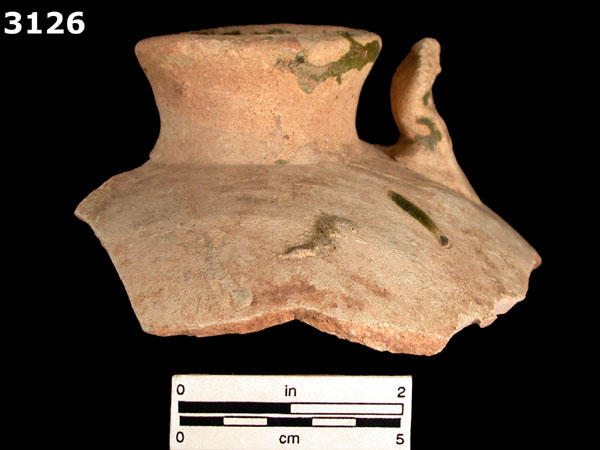View all examples of OLIVE JAR, EARLY STYLE

| Type Name: | OLIVE JAR, EARLY STYLE |
| Type Index: | UNGLAZED COARSE EARTHENWARE |
| Production Origin: | SPAIN |
| Date Range: | 1500-1570 |
| Defining Attributes: |
Paste is compact and coarse with abundant mineral particles as temper. Color is usually light to dark terra-cotta red, well-fired examples are buff-colored. Distinctive form characterized by a globular body, a raised everted mouth, and two crude handles below the neck. Vessel walls are typically about 7 mm. in thickness. A thin white firing effluvium that appears like a very thin slip is often present on the exterior of vessels. Green lead glaze is frequently present on the interior. |
| Vessel Forms: |
STORAGE JAR |
| Comments: | Olive jars, also referred to as tinajas, peruleras or botijas, were the ubiquitous storage and shipping containers for the Spanish American colonies, and evolved in shape and manufacturing technique over four centuries. Early Style Olive Jar is derived from the Spanish cantimplora, or canteen, form. The sides are thrown in two longitudinal halves, so that wheel ridges and marks, when present, are parallel to the height of the vessel, rather than horizontal and parallel to the circumference. Early Style vessels are the most readily identifiable from sherds due to its globular form, thin walls, ridging direction and distinctive flared neck and the presence of handles. It was replaced in the Americas by middle style Olive Jars by about 1570. |
| Published Definitions: | Goggin 1960: 8-11, Deagan 2002: 33-34; Marken 1994; Avery 1997 |